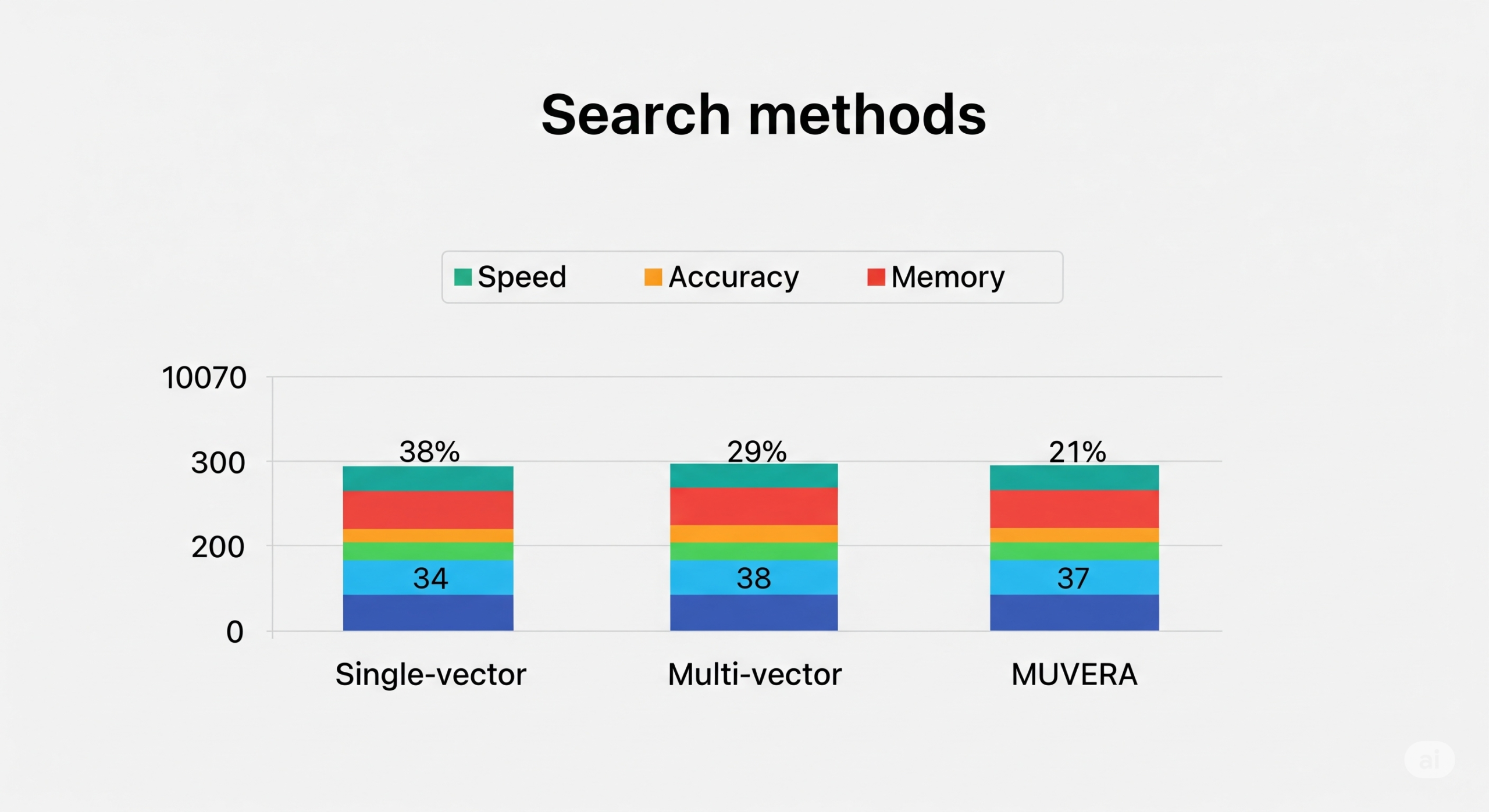Google recently introduced a new technology called MUVERA, which is short for Multi-Vector Efficient Retrieval Architecture. This is a big improvement in the way search systems work—especially those powered by AI and large language models.
In simple words, MUVERA helps search systems find better results faster, using less memory and computer power.
Let’s understand how it works and why it matters.
What Problem Does MUVERA Solve?
Most modern AI-based search systems work in two ways:
- Single-vector search – This is fast and works well for general results, but it may miss some important details.
- Multi-vector search – This is more accurate because it breaks down a document into multiple small pieces (vectors), but it takes more time and uses more resources.
Multi-vector search gives better results but is slower and more expensive to run. Single-vector search is quick but not always as accurate. MUVERA combines the benefits of both.
How MUVERA Works in Simple Terms
MUVERA changes how multi-vector search is handled by turning many vectors into just one smart vector that still carries important meaning. Here’s a basic explanation of how it does this:
- Split into groups – The document is broken down into smaller parts.
- Mix the parts – Each group of vectors is combined using techniques like averaging.
- Compress – A mathematical method called “random projection” is used to reduce the size.
- Repeat the process – This is done a few times to make sure the final result captures all key information.
- Join everything – The results are merged into one final vector that represents the document.
This compressed vector can now be used in fast searches, just like in single-vector search.
Why MUVERA Is Important
MUVERA makes it possible to do fast and efficient search without giving up on quality. It keeps the good parts of multi-vector search but removes the slow and costly parts.
Here’s what MUVERA improves:

- Speed – Searches can be done faster, even for large collections of documents.
- Accuracy – It still gives highly relevant results by keeping the key meanings of documents.
- Cost-efficiency – It uses less memory and processing power, making it suitable for big systems.
This is useful for things like chatbot responses, document search, recommendation systems, and more
How MUVERA Is Used in Search

When a user types a query:
- The system turns the query into a compressed MUVERA vector.
- It compares this with the stored document vectors quickly using a method called MIPS (Maximum Inner Product Search).
- The top-matching results are re-checked using the more detailed original multi-vector search for even better accuracy.
This smart two-step method ensures both speed and quality in search results.
Final Thoughts
MUVERA is an important step in making search systems faster and more efficient without losing out on accuracy. As AI-powered systems grow, we need methods that can handle huge amounts of information quickly and reliably.
With MUVERA, Google shows that it’s possible to get the benefits of multi-vector search while keeping the process as fast and lightweight as a single-vector search.
This could shape the future of how we interact with search engines, chatbots, and AI assistants.

I’m Shivam Panchal, an SEO expert and digital marketer from Delhi. I run SEO Shades, where I share practical SEO tips, link-building strategies, and website growth hacks. With over 3 years of experience, I help businesses boost their online visibility and rank higher on Google.


